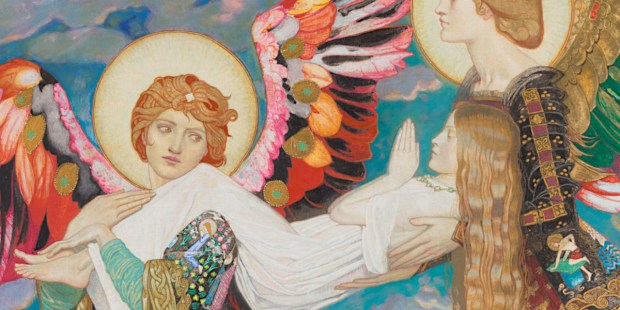- Feb 5, 2002
- 166,616
- 56,253
- Country
- United States
- Faith
- Catholic
- Marital Status
- Married
- Politics
- US-Others
On the occasion of her feast day, see how the 5th century Irish saint was a little ahead of her times.
While February 1 marks the fest day of the Irish saint Brigid, this year it’s also the beginning of a month where the normal tradition of proposing marriage is abandoned. And not many people are aware that according to legend — although it’s important to take these legends with a pinch of salt — St. Brigid had something to do with this little revolution.
As you may know, every four years February 29 rolls around and in the charming tapestry of Irish folklore, it allows for a quirky tradition. In old Irish custom, a Leap Year is the golden opportunity for a woman to take things into her own hands and pop the question on bended knee.
Incredibly this role reversal started in 5th-century Ireland, where St. Brigid of Kildare lamented the long wait for proposals. Legend has it that St. Patrick, ever the peacemaker, suggested that women could propose every seven years, according to My Irish Jeweler.
However, the persistent Brigid managed to negotiate him down to every four years, where Patrick declared a special day in February during Leap Years when women could take the lead in proposing. Quite the unconventional matchmaker!
The tradition hopped across the Irish Sea to Scotland, thanks to Irish monks. In 1288, the Scots went official, allowing women to propose during a Leap Year. Incredibly, declining a proposal on this day could cost a man a fine, ranging from a kiss to payment for a silk dress.
The five-year-old Queen Margaret, who reportedly initiated the law, was allegedly behind these punishments. The youngster also came up with a proposal dress code — a mandatory red petticoat.
Continued below.

 aleteia.org
aleteia.org
While February 1 marks the fest day of the Irish saint Brigid, this year it’s also the beginning of a month where the normal tradition of proposing marriage is abandoned. And not many people are aware that according to legend — although it’s important to take these legends with a pinch of salt — St. Brigid had something to do with this little revolution.
As you may know, every four years February 29 rolls around and in the charming tapestry of Irish folklore, it allows for a quirky tradition. In old Irish custom, a Leap Year is the golden opportunity for a woman to take things into her own hands and pop the question on bended knee.
Incredibly this role reversal started in 5th-century Ireland, where St. Brigid of Kildare lamented the long wait for proposals. Legend has it that St. Patrick, ever the peacemaker, suggested that women could propose every seven years, according to My Irish Jeweler.
However, the persistent Brigid managed to negotiate him down to every four years, where Patrick declared a special day in February during Leap Years when women could take the lead in proposing. Quite the unconventional matchmaker!
The tradition hopped across the Irish Sea to Scotland, thanks to Irish monks. In 1288, the Scots went official, allowing women to propose during a Leap Year. Incredibly, declining a proposal on this day could cost a man a fine, ranging from a kiss to payment for a silk dress.
The five-year-old Queen Margaret, who reportedly initiated the law, was allegedly behind these punishments. The youngster also came up with a proposal dress code — a mandatory red petticoat.
Continued below.

How St. Brigid is responsible for Leap Year proposals
On the occasion of her feast day, see how the 5th-century Irish saint was a little ahead of her times.
